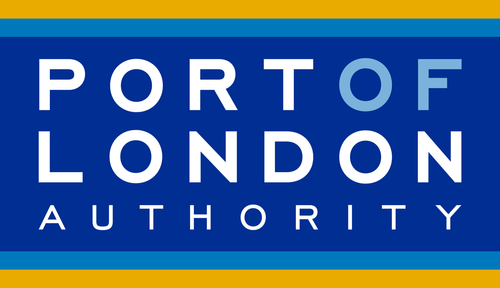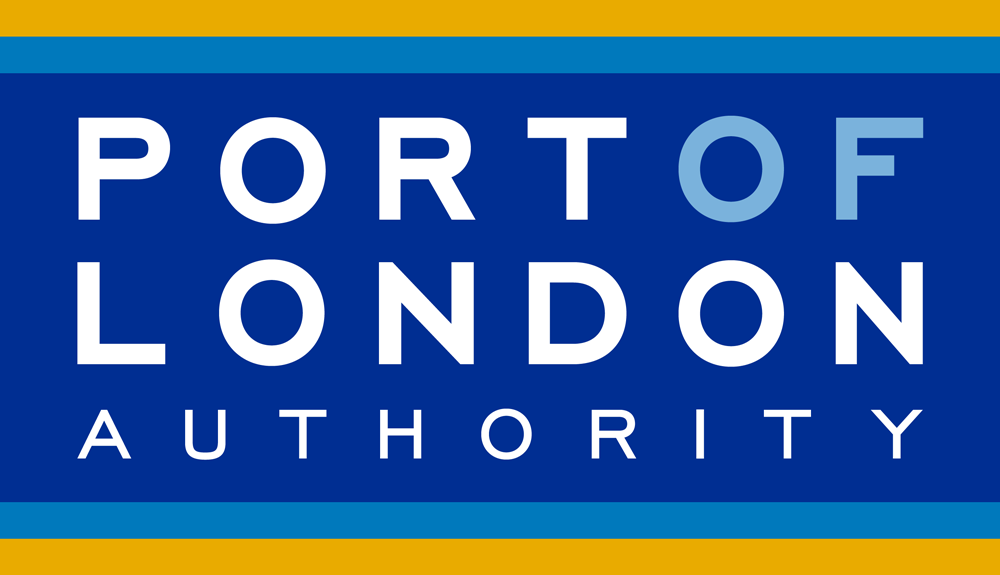Live Tides
NOTICES TO MARINERS
Charts & Surveys
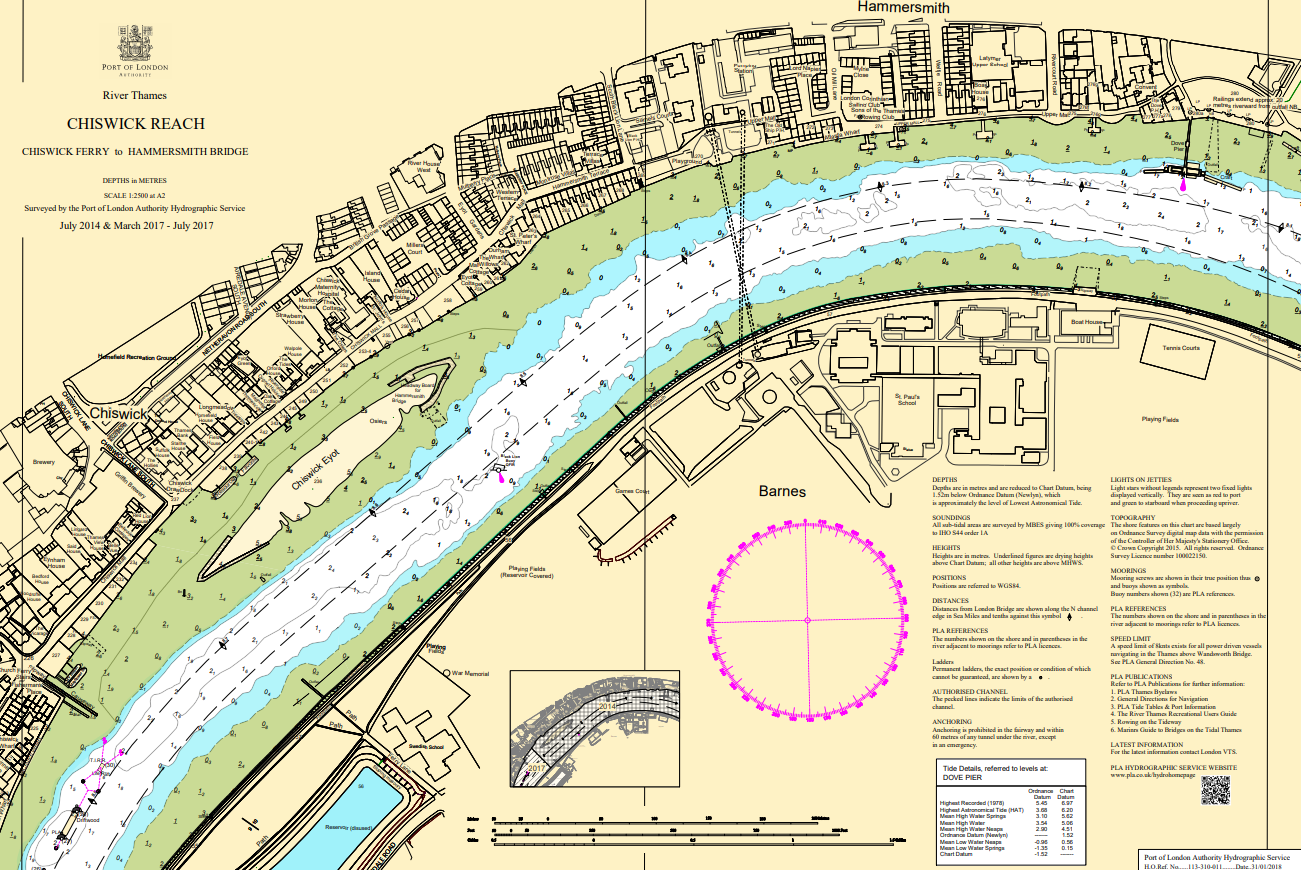
Incident reporting
Life-threatening emergencies on the river:
Call 999 and ask for the Coastguard
For near miss, safety observations and incident reporting click below
Clean Thames Manifesto
WHY THIS AND WHY NOW?
The Port of London Authority is the owner in trust and custodian Type text here of the riverbed and foreshore of the tidal Thames from Teddington Lock to the Estuary.
Our Thames Vision 2050 sets out our goal of being the UK’s largest port, central to the economy, with Net Zero emissions.
As part of this vision, we want a river that is clean, free from pollution, and with a healthy ecosystem. We have a right and a responsibility to insist that the river is not damaged by the actions of others.
More than ever, our stakeholders, river users and the communities who live and work along the riverside, are demanding a clean river. Public and media outrage about pollution in the river has never been more vocal. Our own research on public attitudes tells us that tackling pollution is the top priority.
We want to reduce pollution in all forms, whether that is run-off from agriculture or roads, or micro-plastics contamination. We know that reducing pollution in the Thames is a complex problem that needs more than one solution. We are working to understand the sources and solutions for a wide range of pollutants. For example, we are using our regulatory powers to bring about an end to sewage discharges from commercial vessels from 2024.
We are also using our independent convening power to bring the right stakeholders to the table.
Pollution from storm overflows and discharges from sewage treatment works is our highest concern. We have been a strong supporter of the Thames Tideway Tunnel and have permitted and licenced its construction. Thames Water estimate a 95% reduction of storm water overflow discharge as a result of the project. We welcome the reduction in sewage discharges the tunnel will bring in London. However, we also expect to see water companies investing in more solutions to reduce sewage discharges. For example, investment in smart sewer technologies that manage networks more effectively and sustainable urban drainage schemes (SuDS) will provide storm overflow reductions. We also recognise the limitations and challenges of SuDS in the urban London landscape. Thames Water’s Drainage and Wastewater Management Plan picks up this challenge, proposing the management of 7,000 ha of land using SuDS across London by 2050.
However, neither we nor our stakeholders will accept continuing sewage discharges into our waterways. Reductions in sewage discharges in the Thames are needed and we welcome support from the water industry regulators. We urge the regulators to significantly accelerate targets for storm overflow reduction in the river in their next price review and regulatory cycle.
Thames Water, Southern Water and Anglian Water have committed to work towards reductions in sewage and storm water discharges in the Thames faster than planned. We have asked the water companies to meet the targets set out in the Storm Overflows Discharge Reduction Plan on the tidal Thames at least ten years ahead of the DEFRA targets. This is a major step in the right direction, and we are pleased to be working closely with the water companies and their regulators to go faster and further for the Thames.
REGULATORY POWERS
Environment Agency: The Environment Agency sets and enforces water quality standards, the prevention of pollution and monitors water quality in rivers, lakes, and other waterways. It is responsible for the regulation of the environmental activities of water companies which operate in England.
Ofwat: Ofwat independently regulates the water and wastewater sector in England and Wales. Ofwat plays a critical role in driving the water sector to improve their performance for the environment, including through the price review process.
DEFRA: Defra sets strategic priorities for the water industry in England through a range of measures to protect water quality and ensure that water companies meet their obligations under environmental legislation.
Port of London Authority: The PLA is a public trust port established to manage and regulate the tidal Thames. The PLA works to protect and enhance the environment of the tidal Thames. Section 200 of the Port of London Act prohibits pollution into the Thames.
Local Authorities: Local authorities have a range of power to protect the environment, including water quality, within their areas including regulating development and planning in their area to prioritise environmental improvements and enforcing environmental legislation.
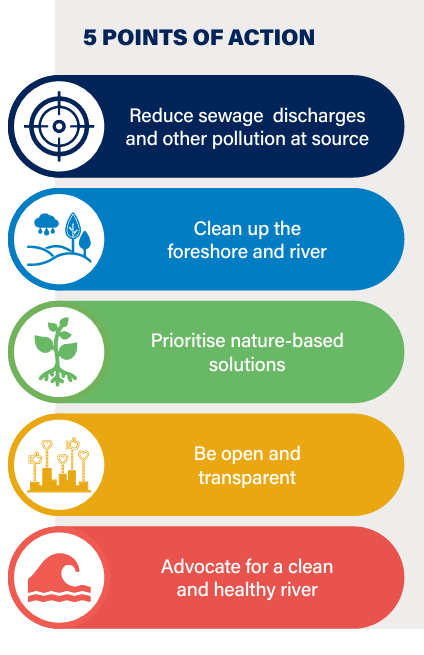

A FOCUS ON SEWAGE POLLUTION
Our stakeholders, communities and river users tell us that stopping sewage pollution in the Thames is a key priority for them. We have convened the water companies and their regulators to discuss solutions.
We welcome their clear desire to reduce sewage discharges from combined sewage overflows (CSOs) and from storm overflows at wastewater treatment works. We also recognise the significant and continued investment in infrastructure, and strengthened regulation, and the important role this plays in tackling sewage pollution.
WE WELCOME:
INVESTMENTS IN INFRASTRUCTURE AND TECHNOLOGIES
- Thames Tideway Tunnel is a £5bn project to reduce storm overflows and discharges
- Thames Water’s industry-leading approach to real-time data on CSO discharges
- Thames Water’s revised River Health Action Plan (RHAP) is a significant upgrade of sewer systems in London and the Thames Valley and will improve quality of the River Thames along its whole course.
- Southern Water’s Clean Rivers and Seas Task Force
- Southern Water’s deployment of 22,000 sewer level monitors and machine learning to proactively drive down sewer blockages to reduce pollution and flooding from the network
- Anglian Water’s Get River Positive campaign and their partnerships and funding approaches exploring the wider benefits that green solutions bring to a range of issues including water quality
- Continued expansion of Smart Sewer Systems and AI technology in water networks to better manage the flow of wastewater
- Planned investment in Sustainable Urban Drainage Solutions from all three water companies
- All storm overflows being fitted with Event Duration Monitors (EDM) by the end of 2023, subject to the Tideway Tunnel programme of works, to allow the Environment Agency and water companies to better monitor activity and target action
- Investment to reduce nutrient loadings into the Thames, in particular phosphate, through delivery of the Water Industry National Environment Programme (WINEP)
REGULATION IMPROVEMENTS
- The Defra Storm Overflows Discharge Reduction plan sets targets for the water industry to reduce storm overflow discharges by 2050
- The targets in the Storm Overflows Discharge Reduction plan will be enshrined in law with proposals for increased fines for non-compliance
- The government’s consultation on the ban of the sale of wet wipes containing plastic
- Ofwat’s new measures to link dividends for shareholders and bonuses for directors to environmental and customer performance
- The UK government’s new Water Restoration Fund
- The Defra Integrated Plan for Water
- Schedule 3 of the Flood and Water Management Act (2010) will assist with the statutory requirement to implement SuDS in new developments
COMMUNITY AND GRASSROOTS EFFORTS
- Our continued partnerships with NGOs such as Thames21 and Thames Estuary Partnership, and community groups to clean up the foreshore of the Thames
- Education and advice programmes delivered by the water companies around the safe disposal of unflushable material and fats, oil and grease, in particular from food service establishments

We are working with the water companies and regulators that discharge into the Thames to develop a strategic partnership on sewage pollution.
As part of our discussions, we have secured the following commitments from the water companies and regulators:
- Thames, Southern and Anglian Water and their regulators have agreed to participate in a strategic working group with the PLA on sewage discharges in the tidal Thames.
- Thames Water have agreed to work with us to find solutions to the wet wipe accumulations on the foreshore through a) co-funding a feasibility assessment to develop a costed plan by 2024 b) agreeing an approach with environmental regulators c) working with partners to agree a funding proposal for the clean-up of wet wipes at identified hotspots by 2025.
- Thames, Southern and Anglian Water have agreed to work with us to provide near real time information on sewage discharges around all their CSOs, and storm overflows from treatment works by 2024.
- Ofwat support water companies bringing forward investment proposals which deliver best value and align with their ambitious long-term plans
- The Environment Agency support water companies to bring forward delivery of planned projects from their 25-year plans in the next WINEP
Working to reduce sewage discharges on the tidal Thames is a complex issue. We know river users are demanding we find a solution. We have asked water companies to look at options to bring forward the national Storm Overflow Discharge Reduction Plan targets from 2050 to 2040 for the tidal Thames. Southern and Anglian Water have committed to working towards 2040, subject to the agreement of the regulators in their price review cycle. However, we recognise the greater complexity this issue brings for Thames Water due to the number of CSOs they operate in the tidal Thames. We also recognise that the Thames Tideway Tunnel will bring significant improvements to the water quality of the Thames.
- Southern Water operate 16 CSOs on the tidal Thames and have agreed to work towards a 2040 target
- Anglian Water operate 34 CSOs on the tidal Thames and have agreed to look at options to achieve a 2040 target for the Thames and other high priority rivers and streams in their operating area
- Thames Water have agreed to look at options to bring forward their discharge targets to 2040 on the tidal Thames, working with the PLA and regulators, in the context of their overall plan for the Thames catchment. They have agreed to announce their plan at a Thames stakeholder event at the end of 2024.
DEFRA STORM OVERFLOWS DISCHARGE REDUCTION PLAN TARGETS
By 2050:
- Water companies will only be permitted to discharge from a storm overflow where they can demonstrate that there is no local adverse ecological impact.
- Storm overflows will not be permitted to discharge above an average of 10 rainfall events per year.
- No storm overflows will be permitted to operate outside of unusually heavy rainfall.
OUR 5 COMMITMENTS FOR TACKLING RIVER POLLUTION
While pollution from sewage discharge into the Thames is a concern, we also recognise that pollution from a range of other sources has an impact on our river.
We will work with a wide range of stakeholders and communities to understand the sources and solutions for all major pollutants in the Thames. In addition to the commitments from the water industry, we will also play our part through our five-point action plan:
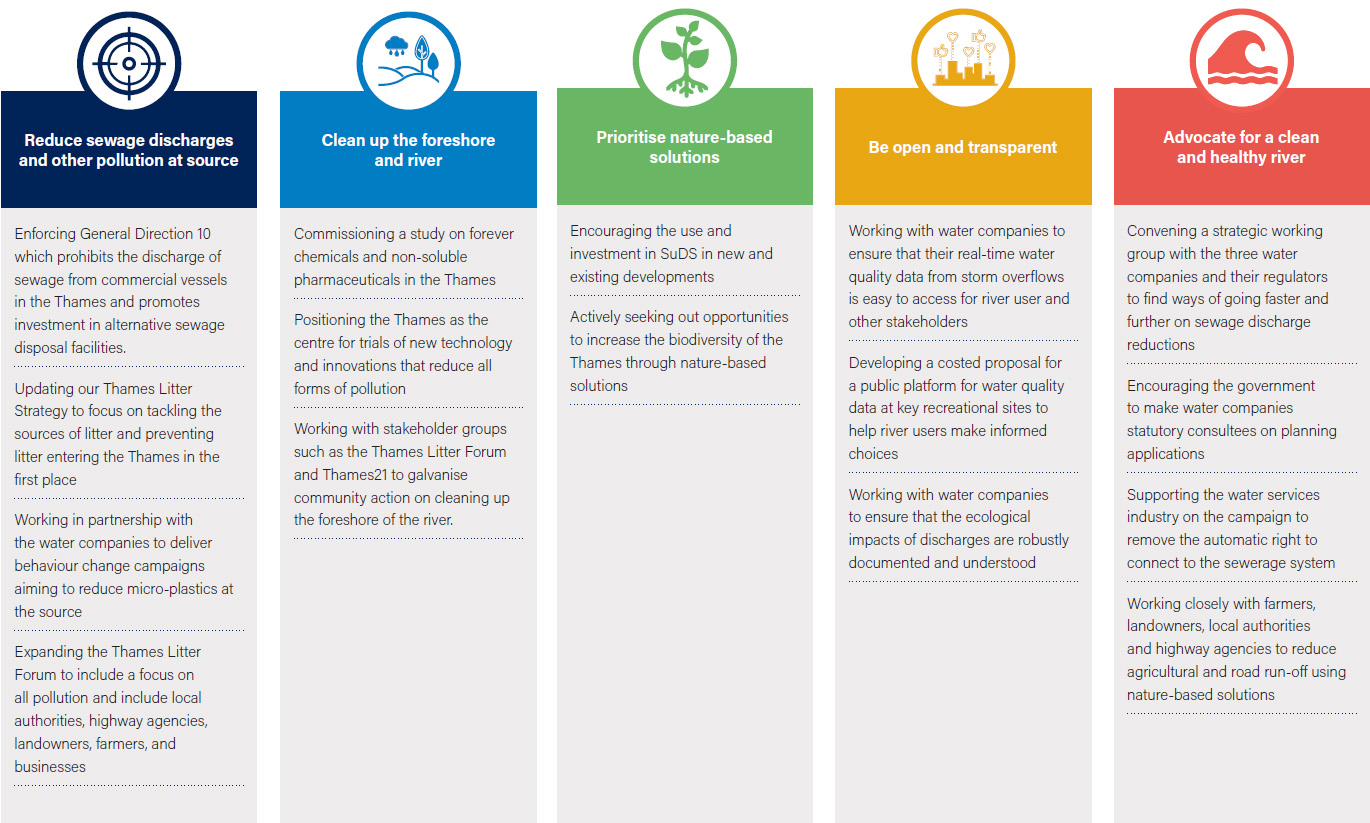
Related content
Discover

